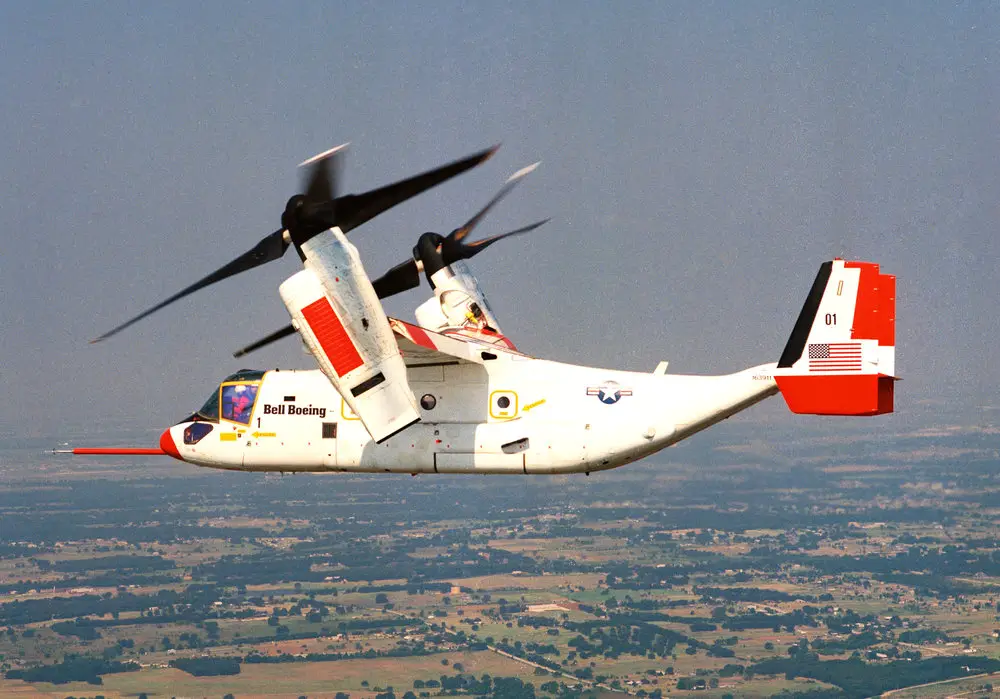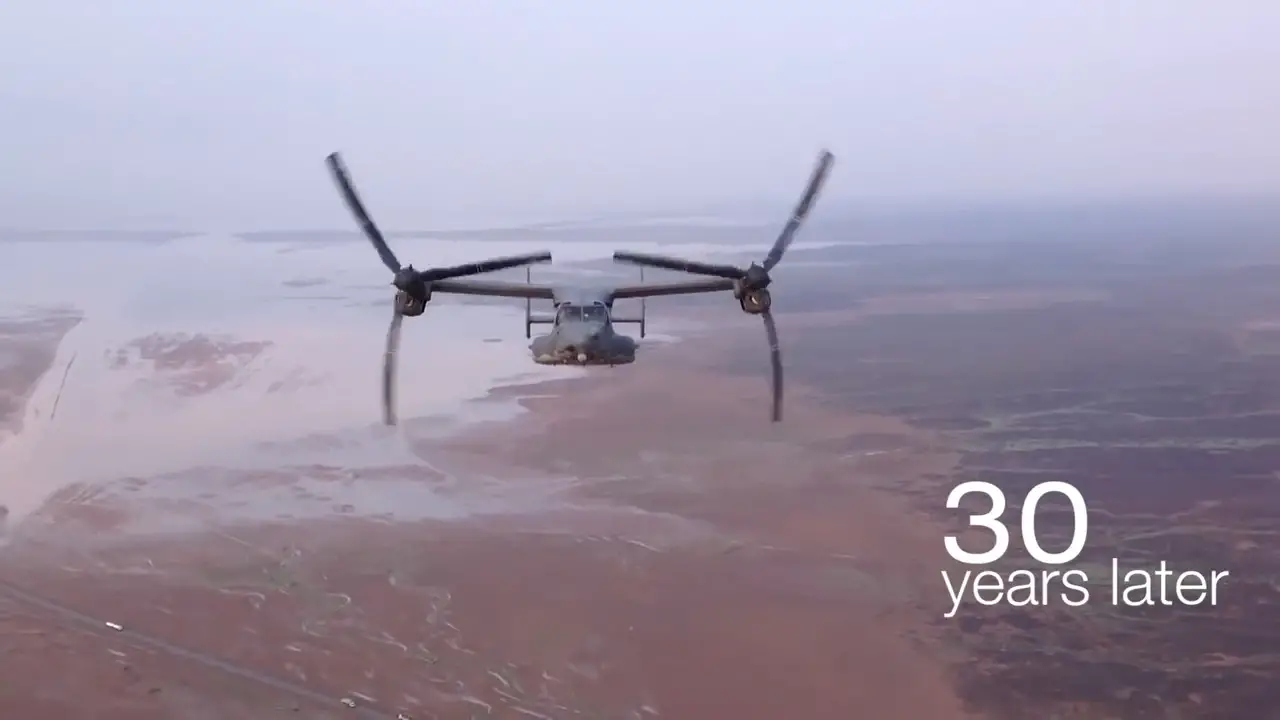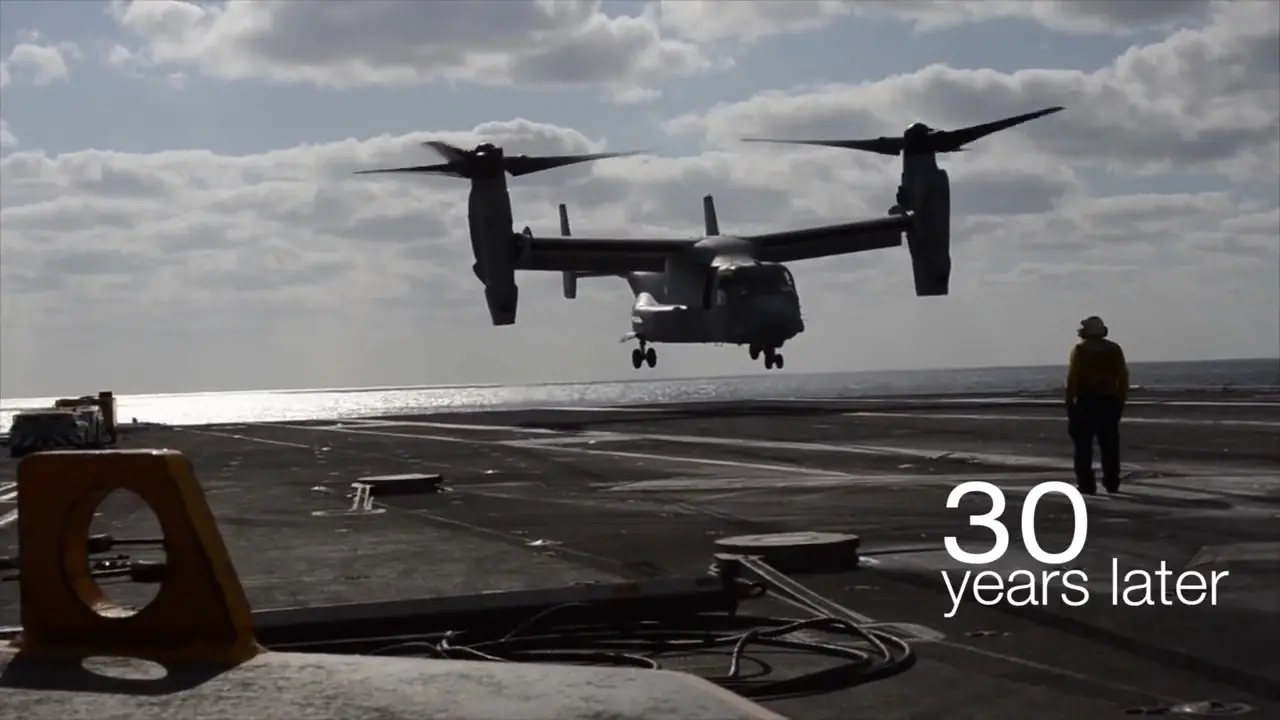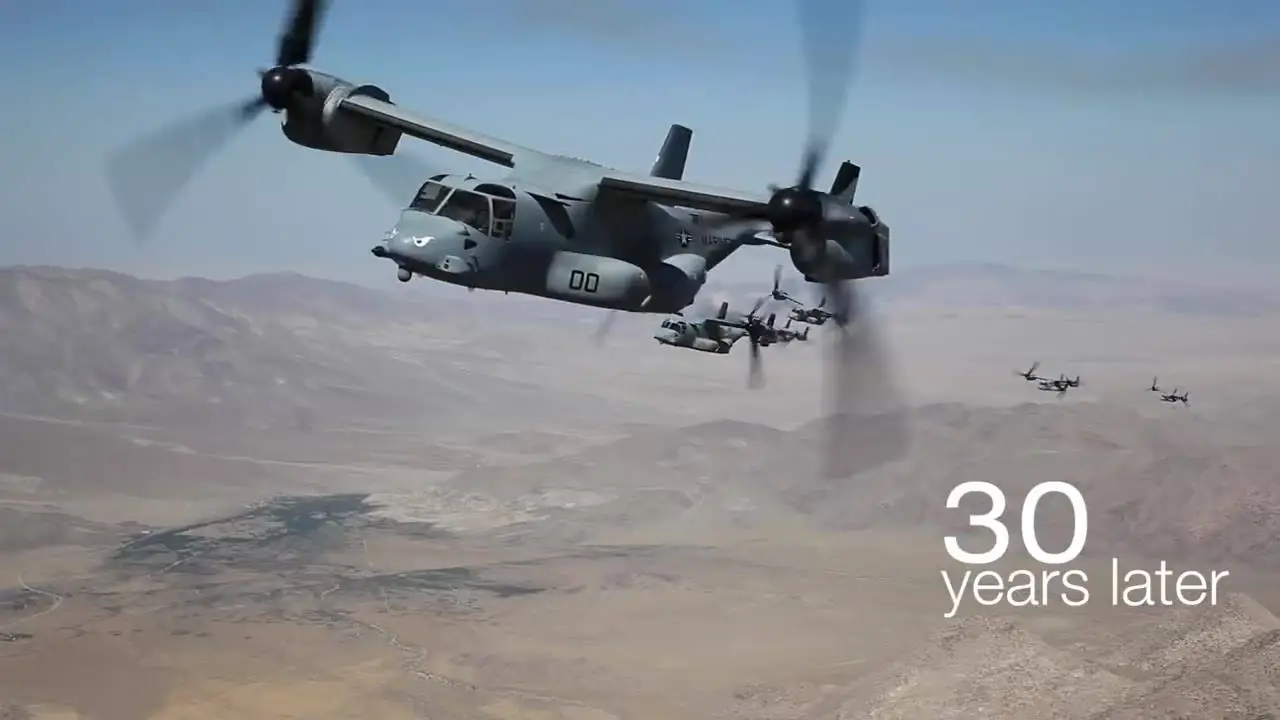During the thirty years since the Bell Boeing V-22 Osprey first flew, the tiltrotor aircraft, built by Bell Helicopter, a Textron Inc.company, and Boeing, has fundamentally changed how the U.S. Marine Corps and Air Force operate in combat and support humanitarian operations. The V-22 has become one of the most in-demand and reliable aircraft in military service with its unique vertical maneuverability combined with the speed, range and fuel efficiency of a fixed-wing airplane. So far, more than 375 V-22 aircraft have accumulated more than 450,000 flight hours across a spectrum of missions. Soon, the U.S. Navy will begin using a new V-22 variant to deliver personnel and cargo to its aircraft carriers, becoming the latest operator leveraging the aircraft’s unique capabilities. The failure of the Iran hostage rescue mission in 1980 demonstrated to the United States military a need for “a new type of aircraft, that could not only take off and land vertically but also could carry combat troops, and do so at speed.” The U.S. Department of Defense began the Joint-service Vertical take-off/landing Experimental (JVX) aircraft program in 1981, under U.S. Army leadership.

The defining mission of the Marine Corps has been to perform an amphibious landing, and they were particularly interested in the JVX program. They realized that a concentrated strike force was vulnerable to a single nuclear weapon, airborne solutions with good speed and range allowed for significant dispersal; and their CH-46s were wearing out; without replacement, the threat of a merger between the Marine Corps and the Army lingered, similar to President Truman’s proposal following World War II. The U.S. Navy and Marine Corps were given the lead in 1983. The JVX combined requirements from the U.S. Marine Corps, Air Force, Army and Navy. A request for proposals (RFP) was issued in December 1982 for preliminary design work. Interest was expressed by Aérospatiale, Bell Helicopter, Boeing Vertol, Grumman, Lockheed, and Westland. Contractors were encouraged to form teams. Bell partnered with Boeing Vertol to submit a proposal for an enlarged version of the Bell XV-15 prototype on 17 February 1983. Being the only proposal received, a preliminary design contract was awarded on 26 April 1983.

The JVX aircraft was designated V-22 Osprey on 15 January 1985; by that March, the first six prototypes were being produced, and Boeing Vertol was expanded to deal with the project workload. The first V-22 was rolled out with significant media attention in May 1988. The first of six MV-22 prototypes first flew on 19 March 1989 in the helicopter mode, and on 14 September 1989 in fixed-wing mode. This redesigned version became the V-22B model. V-22 flights resumed in June 1993 after safety improvements were incorporated in the prototypes. Bell Boeing was awarded a contract for the engineering manufacturing development (EMD) phase in June 1994. The prototypes also received changes to better match the B-model configuration. Flight testing at the stage focused on expanding the flight envelope, measuring flight loads, and supporting the EMD redesign. This and further flight testing with the early V-22s continued into 1997. Flight testing of four full-scale development V-22s began in early 1997 when the first pre-production V-22 was delivered to the Naval Air Warfare Test Center, Naval Air Station Patuxent River, Maryland.

On 28 September 2005, the Pentagon formally approved full-rate production for the V-22, with planned rate increase from 11 a year to between 24 and 48 a year by 2012. Of the 458 total planned, 360 are for the U.S. Marine Corps, 50 for the Air Force, and 48 for the Navy at an average cost of $110 million per aircraft, including development costs. The V-22 had an incremental flyaway cost of $67 million per aircraft in 2008, The U.S. Navy had hoped to shave about $10 million off that cost after a five-year production contract in 2013. The cost for each CV-22 was $73 million in the FY 2014 budget. On 12 June 2013, the U.S. DoD awarded a $4.9 billion contract to Bell and Boeing for 99 V-22s in production Lots 17 and 18, including 92 MV-22s for the Marine Corps. Work is expected to be completed in September 2019. A provision gives NAVAIR the option to order 23 more Ospreys. The combined cost of the June 2013 contract and other associated contracts for the order totaled $6.5 billion. In 2015, Bell-Boeing set up the V-22 Readiness Operations Center (VROC) at Ridley Park, Pennsylvania to gather information from each aircraft to improve fleet performance in a similar manner as the F-35’s Autonomic Logistics Information System (ALIS).
